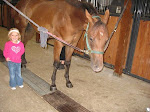Spring is finally here! The seed
catalogs can be put away, with their numerous dog-eared pages. The
dust can be blown off your favorite garden tools. Now is the time to
roll up your sleeves, head to the garden, and get dirty. Inhale the
rich smells of the earth. Experience the vibrant colors of blooming
flowers. Imagine the sweet taste of the season's first vegetable.
FELDMANS is here to help every step of
the way! And we understand that gardeners are becoming increasingly
conscious of what soil amendments are used in their gardens, shying
away from chemical fertilizers and focusing on building a healthy,
quality soil. To this end, nutrient-rich compost goes a long way in
creating a healthy and flourishing garden.
But are all composts created equal? The
variety of commercially available composts is outright confusing.
Here at FELDMANS, we believe that the science of composting shows
that Cotton Burr Compost is the highest quality and most
nutrient-rich compost available on the market! To see why, let's
first look at why compost is so beneficial to soils.
The Black Gold of the Garden
Compost is referred to as the black
gold of the garden due to its numerous benefits to the soil.
Compost improves the soil in 3 main ways: structurally,
nutritionally, and biologically.
Nutritional: Compost
is rich with nutrients, including the macronutrients nitrogen,
phosphorus, and potassium, and micronutrients like manganese, copper,
iron, and zinc. Macronutrients are essential for the overall growth
and structure of the plant. Micronutrients play an important role in
the plant's ability to extract and utilize nutrients found in the
soil. In addition, compost, which has a neutral pH, stabilizes the
soil pH of both acidic and alkaline soils.
Biological: Compost
is teeming with microorganisms like bacteria, protozoa, and fungi!
These microorganisms break down available compost into nutrients and
humus – a stable residue that holds soil particles together. Humus
is beneficial to soil because it increases nutrient and moisture
retention and helps suppress disease.
With all of these benefits, what's not
to love about compost? Admittedly, it can be confusing to sort
through all of the information available on various composts. But
when making the decision as to which type of compost to use in your
garden, the most important rule of thumb is this: any compost is
better than no compost. However, some composts are definitely better
than others, and soil science shows that Cotton Burr Compost is the
highest quality commercial compost available. Let's see why!
Not All Composts are Created
Equal
Cotton Burr makes for a consistent and high nutrient compost, but how
is it superior to mushroom compost, composted manure or other soil
amendments like peat moss? I'm glad you asked. There are many
reasons!
1) There is much variability and inconsistency to be found in
commercial Mushroom Compost. This is because Mushroom Compost
consists of the leftover materials in which mushrooms were grown
(substrates). In other words, there is no standard list of
ingredients for Mushroom Compost. Instead, it can include hay,
straw, poultry litter, cocoa shells, peat moss, cottonseed hulls or
other organic materials. In addition, mushroom farmers use different
substrates for different species of mushrooms, further increasing
compost variability. Finally, these growing substrates have been
partially depleted of nutrients since mushrooms have been grown in
them. This can lead to high levels of salts in the compost. Research
at Penn State University concludes that Mushroom Compost is good for
use on turf grass; however, if used in gardens, Mushroom Compost
should be thoroughly mixed into the soil to help distribute the
salt.
2) Composted Manure has a finer texture than Cotton Burr Compost, making it less effective as a soil conditioner. Cotton Burr has plenty of larger, bulkier particles that help loosen and aerate dense, clay soils.
3) Unlike Peat Moss, Cotton Burr Compost is is easy to wet and re-wet and has the ability to retain lots of moisture, which makes it an ideal soil amendment for dry, clayish soils that leach water. Furthermore, the nutrient content of Peat Moss pales in comparison to compost.
Is Cotton Burr Compost Safe to
Use?
Despite all of the benefits of Cotton Burr Compost, gardeners often
express concern over using it in their vegetable gardens because of
the presence of herbicides and chemicals. In some areas of the U.S.
Cotton Belt, herbicidal defoliates are used to kill the cotton plant
and remove the plant leaves, thereby reducing the stress on
mechanical picker equipment.
 At FELDMANS, there is no worry of herbicide or chemical contamination
because we sell Back to Earth Cotton Burr Compost, which is 100%
chemical free! Manufactured in northern Texas, the early freezes of
the Texas Panhandle eliminate the need to use herbicidal defoliates
to kill the cotton plants. A 2 Cubic Foot bag is $8.99.*
At FELDMANS, there is no worry of herbicide or chemical contamination
because we sell Back to Earth Cotton Burr Compost, which is 100%
chemical free! Manufactured in northern Texas, the early freezes of
the Texas Panhandle eliminate the need to use herbicidal defoliates
to kill the cotton plants. A 2 Cubic Foot bag is $8.99.*
Get your garden off to a great start this year with Cotton Burr
Compost!
* Price is good through June 30, 2013.
.jpg)







